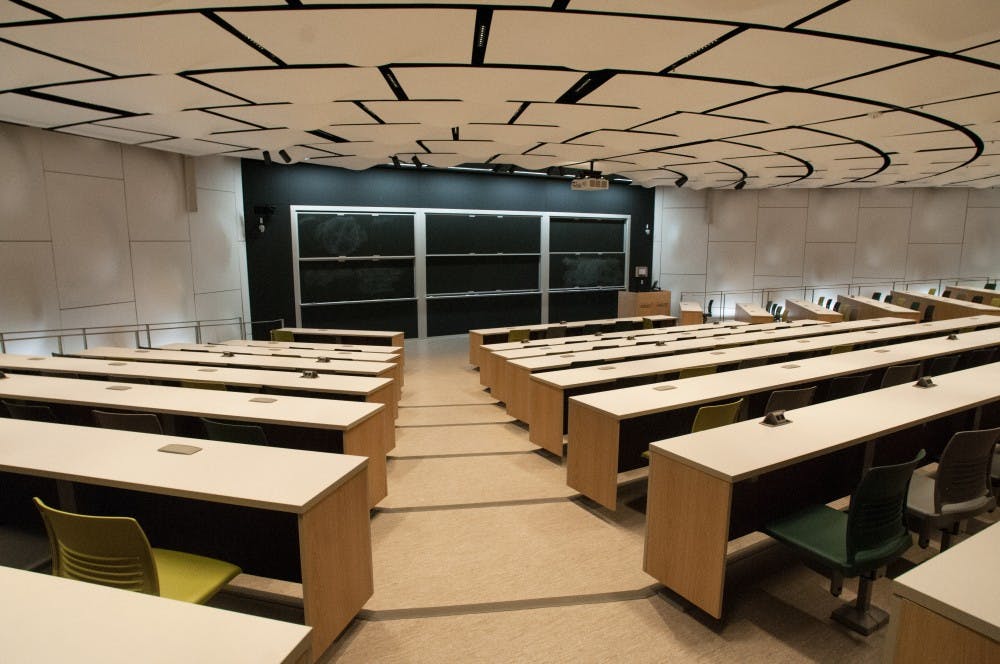For the first time, Penn students can learn Mongolian and delve into a new culture.
The East Asian Languages and Civilizations Department introduced the new course in an effort to expand their Mongolian studies program and increase awareness of Mongolian culture on campus.
“Since I'm Mongolian, if we share our culture and language to other people around the world, maybe our heritage and our language and our wonderful traditions will be preserved,” said College graduate student Otgon “Dashka” Dashdulam, the instructor of Elementary Mongolian. “People should know about this beautiful country.”
Dashdulam, who is originally from the Mongolian city of Bayankhongor, is studying at Penn for one year as a Fulbright Scholar, aiming to introduce her culture to Penn students and increase cultural understanding between Mongolia and the U.S.
Penn has offered similar language courses in the past, having hosted numerous Fulbright Scholars from abroad to teach languages like Uzbek, Turkish, and Chinese. Christopher Atwood, Graduate Chair of East Asian Languages and Civilizations, said that even after Dashdulam leaves, however, the department intends to continue offering Mongolian.
Penn is unique in offering Mongolian as a language, as only a few universities in the United States, including Indiana University and the University of California at Berkeley, offer it as a language option.
"I commend it a lot,” College freshman Tserenpuntsag “TD” Davaadorj said of Penn’s new Mongolian course. “There are so few Mongolian speakers, it's actually surprising that they actually offer Mongolian here.”
Davaadorj, who is Mongolian, said he hopes this program will encourage students to visit Mongolia.
RELATED:
Why do students love language classes?
Program pairs English Language Program students with Penn students for mutual language-learning

Christopher Atwood, Penn professor of Mongolian and Chinese Frontier & Ethnic History (from Christopher Atwood)
With the addition of the new Mongolian language course, there will soon be more chances for Penn students to explore the Mongolian culture beyond the classroom.
Atwood said there are opportunities for students to take field courses in Mongolia starting this summer through the American Center for Mongolian Studies, a non-profit educational organization. Students can study key themes concerning modern Mongolia, such as archaeology, history, and renewable energy.
Since these field courses are not affiliated with Penn, classes taken through ACMS would not count toward Penn credit. Atwood, however, said he eventually would like to teach a course on how Mongolian culture is shaped by the environment and nomadic pastoralism, which would include giving students the opportunity to travel to Mongolia.
Atwood said he believes adding a study abroad component would be valuable to a class because it makes “the class more interesting and also enriches what you can actually see and experience while you're abroad.”
“It’s very beautiful,” Davaadorj said of the country. "Mongolia isn't just the grasslands that you see and hear about. Mongolia has deserts, mountains, forests — there's a variety of experiences offered in Mongolia.”
Although most students who take classes in Mongolian studies are graduate students, Atwood hopes the new language and summer field courses will stimulate more interest among undergraduate students to discover more about Mongolian culture.
Elementary Mongolian is being offered in the fall and spring semesters and counts as a credit towards the language requirement.
“Mongolia is a region that has cultural communication,” said School of Design graduate student Wei Chen, who is enrolled in Elementary Mongolian this semester. “If someone is interested about nomadic life and the culture of China, Mongolia, Manchu, and Tibet, I think Mongolian is a really cool language for [students] to learn.”
Although Chen is one of only five students enrolled in the Mongolian language class, Atwood’s hopes remain high.
“We're starting small,” said Atwood, “but we hope to get the word out and make [the Mongolian studies program] bigger over time.”









